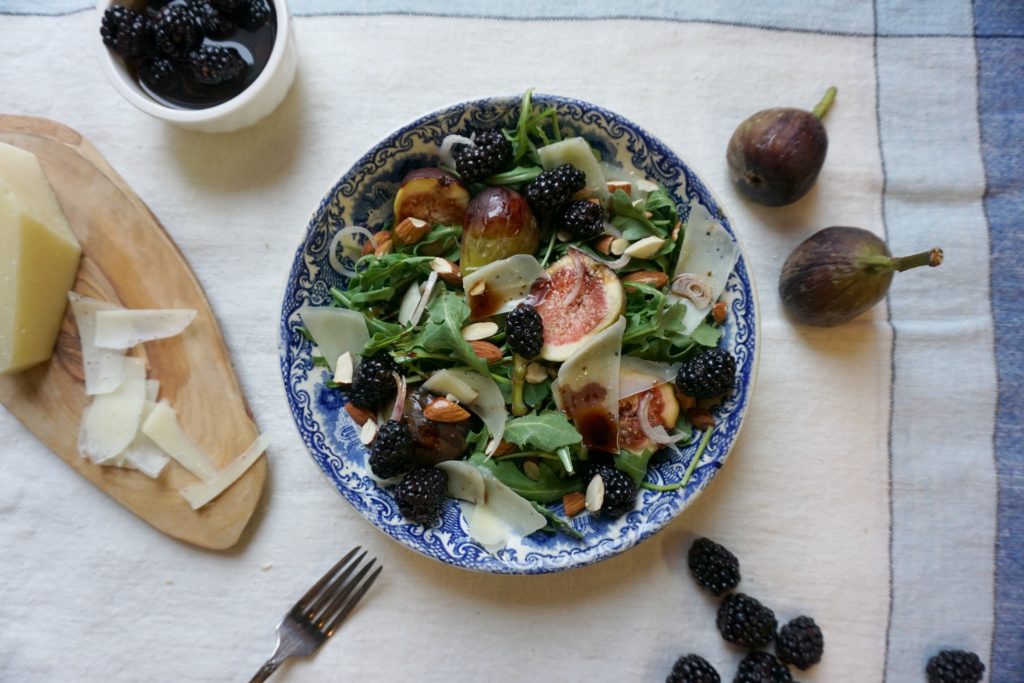Figs Recipe & Nutrition ‘s Encyclopedia of Food Follow us on to keep up with all the latest research in food, nutrition, diet, and health. Figs Recipe & Nutrition is a blog dedicated to providing all the latest research on food, nutrition, diet, and health. From a vast archive of studies, to forums, and other resources, we keep you informed.
The best thing about figs is that they are so versatile to add to anything you want. They can add color and sweetness to cakes and desserts, they can be used to make bread and cookies, they can be used as meat replacements and used as a meat tenderizer as well.
“figs.com” is the site where you will find nutrition terms like “Amino-acids”, “Carbohydrates”, “Cholesterol”, “Fats”, “Fiber”, “Minerals”, “Plant Sources”, “Protein”, “Water” and “What is Nutrition?”.
A Quick Look
Figs are a kind of fruit that comes in both fresh and dried forms. Figs have a rich taste, a pleasant aroma, and a delicate meat made up of small seeds. Fiber, calcium, magnesium, and potassium are all abundant in them. Figs have a somewhat savory taste, but they’re high in sugar: one big fig has approximately 8 grams of sugar for just 37 calories. Fresh figs may be eaten straight off the tree or added to salads and other cold meals. Dried figs are often used in baking and eaten as a snack. Fresh figs are fragile, so keep them in the fridge with care and consume them as soon as possible.
Overview
The common fig is a blooming plant that is cultivated for its edible fruit. The fig is technically not a fruit, but rather an inverted blossom. It grows well in moderate regions, such as the Mediterranean.
There are many fig cultivars. A popular variety is black Mission figs. Fresh figs are in season between the early summer and late autumn, while dried, packaged figs are accessible all year.
Identification
Figs are usually plump, teardrop-shaped fruits with a rounded bottom and a short stem on top. Most popular kinds, such as Mission figs, are dark purple in hue. The interior of the fig is pink and meaty, with small seeds within.
Nutritional Information
A medium fig (approximately 50g) has 37 calories, 0.4 grams of protein, 0.2 grams of fat, 9.6 grams of carbs, 1.4 grams of fiber, and 8.1 grams of sugar.
Fibre is abundant in figs, and they are also high in calcium (18mg per one medium fig). Mission figs are high in magnesium, potassium, and vitamin K, among other minerals and vitamins.
Selection
When pressed, fresh figs should feel plump and have a slight give. Small cracks or wrinkles are okay, but oozy or bruised and broken figs should be avoided. The smell of fresh figs should be pleasant.
Dried figs are usually sold in pre-wrapped packages. Check the expiry date on the package for freshness. If buying bulk, check for mold or discolouration. Dried figs should smell sweet not sour.
Storage
Fresh figs are delicate and rapidly deteriorate. They’re best served at room temperature, but they may be kept in the fridge to prolong their shelf life. They should be consumed within two to three days.
If you leave figs out in the rain for too long, they will mold. Keep them in a basket or container with good air circulation and enough of space between each fig to prevent this.
Dried figs may be stored in an airtight container for up to 6 months. Dried figs should be stored in a tightly sealed container or in their original packing in a cold, dark location.
Preparation
The delicate skin and interior meat of the fig, which is packed with small edible seeds, are both edible.
Figs may be eaten straight from the hand. They’re also often used in sweets, such as biscuits and tarts, as well as sauces, jams, and compotes.
If you’re chopping dried figs, use a sharp knife and rinse it periodically if it becomes too sticky.
Tip: Freeze dried figs for an hour before preparing them to make slicing them simpler. When cutting a big amount of dried figs for baking, this method works nicely.
Fresh figs may be used in both savory and sweet recipes. Grilling or roasting the figs caramelizes the sugars in the figs, enhancing their rich, sweet, and savory tastes.
Add fresh figs, whole or sliced, to a variety of salty cured meats like prosciutto, cheeses like brie and blue, a drizzle of honey, and some pistachios and walnuts to make a cheese board. The combination of salty, sweet flavors, as well as creamy and crunchy textures, will bring out the flavors of the figs.
SALAD WITH FRESH FIGS, BALSAMIC REDUCTION, AND QUICK-PICKLED BLACKBERRIES

Fresh figs are a luscious delicacy. Here, this sweet, tender fruit is combined with tangy quick-pickled blackberries, asiago cheese, and crunchy almonds, married under a drizzle of balsamic reduction. Swap out the fresh figs for chopped dried figs if that’s all you have access to – the salad is delicious either way.
Ingredients
Blackberries are among the pickled berries. white wine vinegar, 6 ounce a half-cup of fish sauce maple syrup, 2 tbsp 2 tablespoons Salad dressing: reduced balsamic vinegar (see instructions below) 1 arugula cup 4 cups grated or shaved asiago cheese 60g finely minced shallot 1 tablespoon coarsely chopped toasted almonds 1/4 cup ripe, fresh figs, cut into half or quarters 5 tbsp extra virgin olive oil, salted and peppered to taste
Directions
Time to Prepare: 25 minutes 15 minutes to prepare 2 servings (about)
For the Quick-Pickled Blackberries, follow these instructions:
In a jar, combine all of the ingredients. The liquid should barely cover the blackberries’ surface. To mix the ingredients, close the container and give it a few gentle shakes. Place in the refrigerator for 6 hours or overnight marinating. When ready, scoop out the blackberries and place them on top of the salad as directed below.
Salad and Reduction Ingredients:
Make the balsamic reduction first: in a saucepan over medium-high heat, bring one cup of balsamic vinegar to a nice simmer. Allow to cook for 10-15 minutes, or until liquid has reduced to approximately a quarter of its original volume. Allow it cool until it reaches a sticky, syrupy consistency. (If you want to speed up the process, put it in the fridge for approximately 30 minutes.)
Assemble the salad once the blackberries have been pickled and the balsamic vinegar has been reduced and cooled: Top with cheese, almonds, figs, and a handful of pickled blackberries after dividing the arugula into two dishes. Drizzle the balsamic reduction, olive oil, and salt and pepper to taste over each bowl. Serve right away.
Book of Free Recipes
Every month, the Encyclopedia of Food grows as we include new delicacies and stunning food photography. Simply click this link to keep up with the latest news. Following that, we’ll give you a complimentary copy of our recipe book. We’ll also notify you when we introduce new and tasty items to the site.
For a free copy of the Encyclopedia of Food recipe book, go here.
Foods That Are Related
Figs are a very popular fruit and are found in many cuisines around the world. Their availability for commercial cultivation has been limited to a few countries, including Japan, South Africa, Greece, and Italy. This article is an attempt to give a complete description of all the known aspects of figs as a food, including their nutritional value and history of use.. Read more about fig recipes jam and let us know what you think.
{“@context”:”https://schema.org”,”@type”:”FAQPage”,”mainEntity”:[{“@type”:”Question”,”name”:”What do I do with fresh figs?”,”acceptedAnswer”:{“@type”:”Answer”,”text”:”
You can eat them raw, but they are also great in a salad.”}},{“@type”:”Question”,”name”:”What is the best way to eat figs?”,”acceptedAnswer”:{“@type”:”Answer”,”text”:”
The best way to eat figs is to cut them in half, and then dip the halves into a bowl of honey.”}},{“@type”:”Question”,”name”:”How do you prepare and cook figs?”,”acceptedAnswer”:{“@type”:”Answer”,”text”:”
Figs are a fruit that can be prepared and cooked in many different ways. They can be baked, boiled, grilled, or even fried.”}}]}
Frequently Asked Questions
What do I do with fresh figs?
You can eat them raw, but they are also great in a salad.
What is the best way to eat figs?
The best way to eat figs is to cut them in half, and then dip the halves into a bowl of honey.
How do you prepare and cook figs?
Figs are a fruit that can be prepared and cooked in many different ways. They can be baked, boiled, grilled, or even fried.
Related Tags
This article broadly covered the following related topics:
- figs
- fig fruit
- are figs high in fiber
- figs benefits
- how to eat figs
 HQ Grande Prairie HQ Grandie Prairie is an online news portal aimed at providing latest day to day happenings of the World to its viewers.
HQ Grande Prairie HQ Grandie Prairie is an online news portal aimed at providing latest day to day happenings of the World to its viewers.
